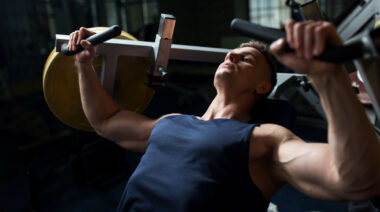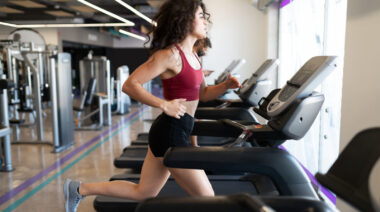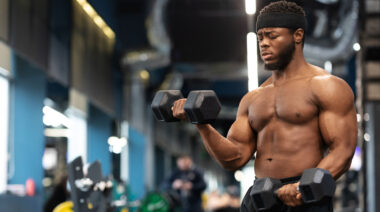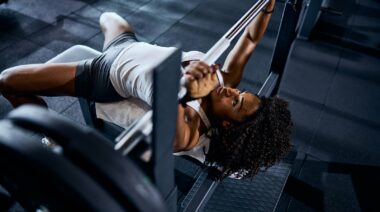Kettlebells are versatile training tools that offer a completely unique training effect. You can maximize the benefits of your kettlebell work with a proper warm up to ready your body for their unique stimulus.
Anyone who trains with kettlebells on a regular basis can attest that they often feel lighter when putting them away after a workout than when you carry them out at the beginning. It stands to reason that we should perceive them heavier while fatigued, but we often experience the contrary. Your kettlebell feels lighter after a workout because your body has adapted to moving the weight. Despite fatigue, you nervous system has grown accustomed and better-suited for the engagement required to move and control external weight. Your warm up should create this effect before you even get to your working sets.
An optimal kettlebell warm up should not only ready you physically, but mentally and neurologically.It should strike a balance between neurological readiness and physical fatigue. Basically, we want everything turned on and ready for action without wearing you out.
The 3-Phase Kettlebell Warm Up
I use the following three movements, in my own training and with my athletes, before each kettlebell training session. While many of these exercises act as a great general warm up—offering circulation, mobility, and joint prep—they focus primarily on the engagement and proprioception required to move a kettlebell effectively and fluidly. You should still use your typical routines for general warm up, mobility, and joint prep.
Around the World
Pick up the kettlebell and swing it in a smooth circle around your waistline. Prioritize moving the kettlebell smoothly and keeping your mid-line solid. You can begin this exercise with a lighter weight to preserve the intention of smoothly moving the bell through space while maintaining control and stability.
Key Points:
- Circular kettlebell path: Maintain a circular kettlebell path, rather than letting it swing low across the front and back.
- Stable and strong position: Maintain a stable midline with minimal deviation from a vertical standing position. Imagine you are a rigid tether ball pole with the kettlebell moving evenly in a circle around your waist. Remember, this exercise is all about developing control and mastery of moving the kettlebell through space, not shifting your weight to accommodatethe kettlebell’s path.
- Smooth passes from hand to hand: The kettlebell should not wobble or lose its path when you pass from hand to hand.
- Go both ways: Bodies are intelligent and will automatically choose the direction that feels more easy and natural. Practice swinging both directions to close the proprioception gap between your dominant and non-dominant directions.
Figure Eight
The figure eight requires a similarly stable and static body with movement only from the arms and kettlebell. The figure eight has the added benefit benefit of warming up your legs and hip hinge. Begin in a wide stance, outside your squat position. Squat about halfway down. Smoothly pass the kettlebell between your legs, around one leg, and back between your legs. Repeat this continually on both sides, drawing a figure eight between your legs with the kettlebell path.
Key Points:
- Squat and hinge: Create the depth in this position by dropping deeper in your squat and hinging at the hips. Do not lose your shoulders and upper back forward. Maintain a neutral spine just like in your swing.
- Stay tall: Remain as upright as you can while still achieving the proper depth. Look straight across rather than down at the ground or kettlebell. Think about showing your chest to the wall across from you.
- Control the weight: Do not let the kettlebell pull you out of position as it moves through its path.
- Go both ways: Just as in around the world, swing both directions. Pass through your legs from front to back and from back to front.
Halos
The halo offers a further opportunity to move and control the kettlebell weight while maintaining a strong and stable midline. The halo also offers a complete upper body warm up and thorough joint mobility and prep for the wrists, elbows, and shoulders.
Begin with the kettlebell in front of your face, holding it by the horns as you would for a goblet squat. Some people prefer to begin with the kettlebell upside down; either orientation works well. Lift one elbow as you drop the other to pivot the kettlebell around your head. It will end up upside down behind your head with both elbows pointing straight up. Continue by mirroring the movement around the other side to return to your starting position.
Key Points:
- Stay smooth: As with every kettlebell movement, maintain a smooth and steady path of travel. Your regular swing weight might be quite heavy for the halo. Begin with something light and prioritize a smooth kettlebell path and fluid joint rotation.
- Low kettlebell path: The deepest stretch comes from maintaining the lowest kettlebell path. Strive to begin with the kettlebell in front of your chin, move it just above your shoulders past your ears, and let it pass across the base of your neck.
- Stable midline: Stand tall and engage your core, legs, and butt to maintain your position and posture. It is especially easy to lose your upper back and shoulders forward when the kettlebell passes in front and fall into a hyper-extended spine (arched back) position when the kettlebell passes across the back. Avoid these common faults by clamping down on all your core muscles through you torso, butt, low back, and upper legs.
Warm Up to Improve Movement Quality
Kettlebells do not pose a significantly heavy load to your system, but moving them effectively through space requires a completely unique skill set and awareness. Use these exercises as a warm up to optimally prepare your system for more intense kettlebell work. Building a warm up based on principles of proprioception, engagement, and awareness will help you develop as a more capable swinger and an all-around more integrated mover.
Now that you’re warmed up, how about working on your get up?
Make Turkish Get Ups Your Best Movement






